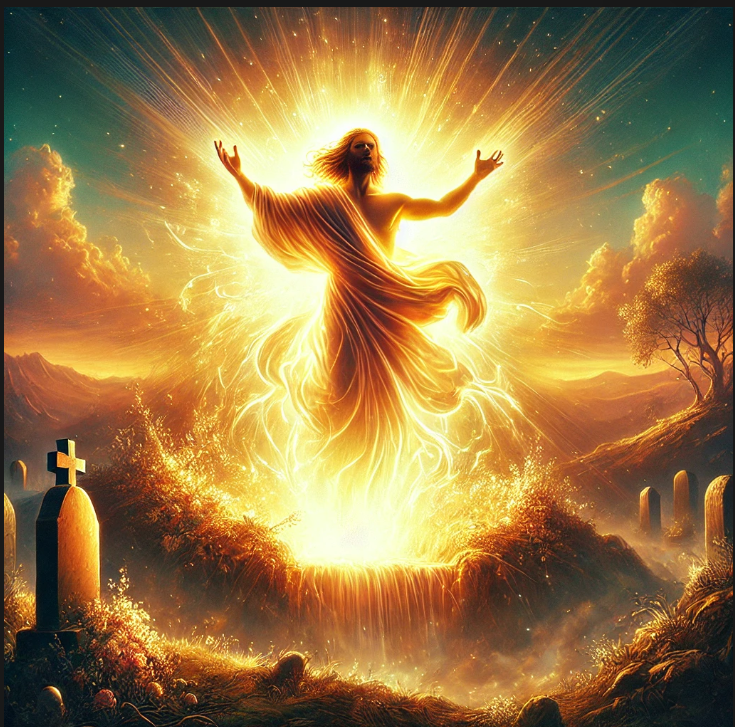Union with Christ and Glorification
This is the 8th and the last part of my series of reflections on John Murray's book, Redemption: Accomplished and Applied where the author explains the meaning of Union with Christ and Glorification.

Union with Christ
In the 9th chapter, Murray explains that "union with Christ" is the application of redemption, and in this section, he sets forth its broader meaning, ranging from past to forward in light of Biblical passages. He understood that without this union, we cannot properly view our standing before God in the past, present, or future. It is through our union with Christ that we can grasp the full scope of our salvation and the transformative impact it has on the Christians' relationship with God. In doing so, Murray attempted to trace the beginning of union with Christ starting with Ephesians 1:3-4 and states that election is not void in the sense that we cannot know all of its precursors, but one thing is clear: the elects are chosen "in Christ." This tells us that there is no election apart from Christ.
As to the condition of the natural man, our author notes that man in his natural state is hostile to God, making the possibility of union dependent on the "effectual calling" that enables a response, leading to fellowship with Christ.
Explaining the nature of union with Christ, Murray highlights two important aspects:
First, he notes that it is spiritual, meaning the bond of this union is the Holy Spirit, who indwells and controls believers, hence, creating a spiritual relationship.
Second, he notes that it is mystical. However, he qualifies the meaning of this term in four ways:
It was mystical in the sense that it was kept secret from times eternal.
But it did not remain hidden forever.
Instead, it was revealed through the Scripture, and
Lastly, with the end goal of bringing all nations into the obedience of faith
Glorification
In the tenth and last chapter of the book, Murray describes glorification as the pinnacle and completion of applied redemption for those who put their faith in the person and works of Christ. Glorification completes what effectual calling has started and symbolizes salvation in its purest form. As believers fully adapt to the likeness of Christ and enter into the everlasting presence and glory of God, this last stage represents their ultimate change and perfection.
Concerning this matter, Murray endeavors to pinpoint where glorification would take place. The first rejection is the idea of death. He states that glorification is not attained when a believer in Christ dies. While it is true, on the one hand, that when a believer in Christ dies, he or she enters a state where the presence of sin is absent, and wherein he or she is made perfect in holiness.
On the other hand, the blessedness of glorification is not solely confined to the believer's death; to do so would undermine the nature of such a great hope. Instead, it must be maintained that all the consequences of sin, and ultimately death, are destroyed in glorification. Hence, it is somewhere tied up in the resurrection. To this, he adds that it is instantaneous. Glorification is bound in the coming of Christ in glory (1); and is, therefore, related to the renewal of all creation (2).
To conclude, the last two chapters of Murray's book discuss the doctrines of Union with Christ as the foundation of redemption and Glorification as the ultimate completion of salvation, highlighting the believer's transformation through the Holy Spirit and the hope tied to Christ's return and the resurrection.
Here's the directory of the complete series of reflections on John Murray's Redemption: Accomplished and Applied:
Reference:
Murray, John. Redemption: Accomplished and Applied. Grand Rapids: Wm. B. Eerdmans Publishing Company, 1955. Reprinted April 1980.
Posted Using InLeo Alpha

Congratulations @axietrashgame! You have completed the following achievement on the Hive blockchain And have been rewarded with New badge(s)
Your next target is to reach 2000 upvotes.
You can view your badges on your board and compare yourself to others in the Ranking
If you no longer want to receive notifications, reply to this comment with the word
STOPCheck out our last posts:
Congratulations @axietrashgame! You received a personal badge!
Wait until the end of Power Up Day to find out the size of your Power-Bee.
May the Hive Power be with you!
You can view your badges on your board and compare yourself to others in the Ranking
Check out our last posts: